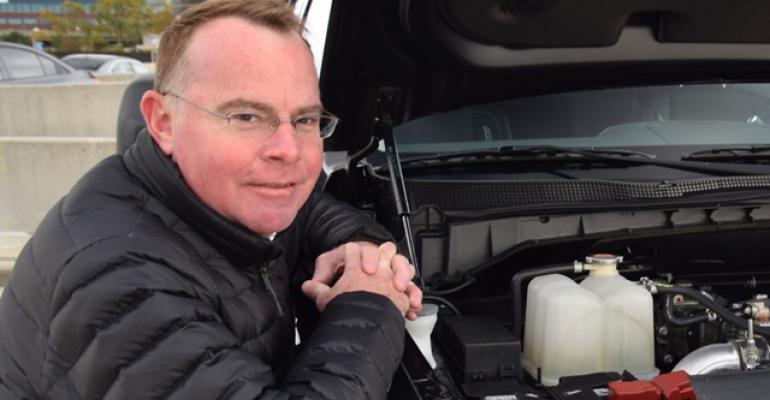It was just four short years ago when the 2.0L turbocharged 4-cyl. flexed its muscle in the 2012 Wards 10 Best Engines competition with eight of the 34 entries that year sharing the same displacement and boosted technology.
The trend has held up in subsequent years, as automakers in the U.S. go low in the displacement game to meet stricter fuel-economy and emissions regulations but still offer enjoyable driving dynamics.
In fact, since the 2012 competition, when three of the 10 Best Engines were 2.0L turbos, another half-dozen of them have captured an award, including two this year.
However, five others were of even smaller displacement. Two of those pint-sized engines used electric boost to win an award: the 1.5L DOHC 4-cyl. in the Chevrolet Volt extended-range electric vehicle and the 1.8L DOHC 4-cyl in the Toyota Prius hybrid-EV.
Beyond the Volt and the Prius, WardsAuto editors call out a number of other sub-2.0L candidates for their strong, if not 10 Best, performance. One recurring theme for the field was excellent pull off the line and generally good fuel economy, but a lack of refinement.
“Smooth operator,” one judge says of the Chevy Malibu’s DOHC 1.5L 4-cyl. turbo, a sister to the Volt’s EREV that uses turbocharging for a peak 160 hp and 184 lb.-ft. (250 Nm) of torque. Editors easily meet the EPA-estimated combined-cycle fuel economy of 31 mpg (7.6 L/100 km).
But the little guy also gets a bit raspy at higher revs and lacks punch for passing.

The DOHC 1.5L 4-cyl. turbo in the Honda Civic also draws praise. “This is the future for many cars,” one judge says. “Drivable, smooth, quiet: great engine for the Civic,” another adds.
In real-world driving, however, the engine does not duplicate its 31/42 mpg (5.6 L/100 km) city/hwy fuel economy estimates, and there are a number of gripes about the CVT, proving once again a great engine can be undercut by unimpressive transmission.
The 1.5L 3-cyl. turbo from BMW, a 2015 winner, impresses judges with a ready-to-run demeanor, and it seems right at home as tested in the Mini Cooper Hardtop, but there were complaints of buzziness from under the hood and an abrupt stop-start function.
Looking ahead to the 2017 Wards 10 Best Engines competition, another crop of little giants will be in the field, including a 1.6L 4-cyl. turbo from General Motors and a 1.4L turbo-4 from Volkswagen if the German automaker cleans up its emissions problems.





